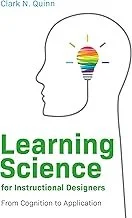Staying Current in Instructional Design: Why It Matters
Instructional design is a field that evolves rapidly, shaped by advances in technology, shifts in workplace needs, and new insights from learning science. For professionals, staying up to date with trends and principles is essential to designing meaningful, effective learning experiences. That’s why I keep up with current research by experts in learning and instructional design, as well as old favorites like Understanding by Design which remains as relevant as ever when creating courses that are relevant and meaningful for learners.
One valuable lesson comes from Julie Dirksen’s Talk to the Elephant: Design Learning for Behavior Change (2023), which highlights the critical role of behavior change in learning. Dirksen emphasizes that successful instructional design requires more than transferring knowledge; course designers must create experiences that connect with both learners’ motivation and their context to build skills and workplace competencies. A beautiful and innovative course with all the technological bells and whistles will not be impactful if learners can’t relate or understand how to apply the lessons to their jobs.
Cara North’s Learning Experience Design Essentials (2024) underscores the growing need for learner-centered approaches. Situating instructional design within the broader discipline of learning experience design, North highlights the importance of empathy, usability, and accessibility to enable on-the-job performance. She focuses on three constructs of engagements (behavioral, cognitive and emotional) which are necessary for learning to occur. By integrating these principles with learner context, designers can craft experiences that are not only instructionally sound but also engaging and inclusive.
Clark Quinn’s Learning Science for Instructional Designers (2021) grounds design decisions in cognitive and behavioral science. His work serves as a reminder that fads and flashy tools cannot replace evidence-based practices. Instead, effective instructional designers must continually revisit foundational principles of how people learn, ensuring their work is backed by science rather than trends alone. In the age of fancy AI-based tools this is an important lesson to remember to distinguish between the factors that guide actual learning versus cool technology which may look fun but which can also distract from the ultimate objective.
In my view, the importance of foundational models should not be overlooked. Wiggins and McTighe’s Understanding by Design (1998) remains a cornerstone for me, offering the enduring principle of backward design: beginning with desired learning outcomes and aligning assessment and instruction to those goals. Ensuring that the learning objectives are scaffolded in ways that don’t overburden student capacities is also important.
Together, these works illustrate that instructional design is both timeless and ever-changing. To remain effective, practitioners must balance emerging practices with established principles—keeping learning experiences relevant, rigorous, and responsive to learners’ needs.
References
Dirksen, J. (2023). Talk to the elephant: Design learning for behavior change. New Riders.
North, C. (2024). Learning experience design essentials. ATD Press.
Quinn, C. (2021). Learning science for instructional designers. ATD Press.
Wiggins, G., & McTighe, J. (1998). Understanding by design. ASCD.
Written with the help of ChatGPT. All information fact checked and yes, I have read all of these books!








